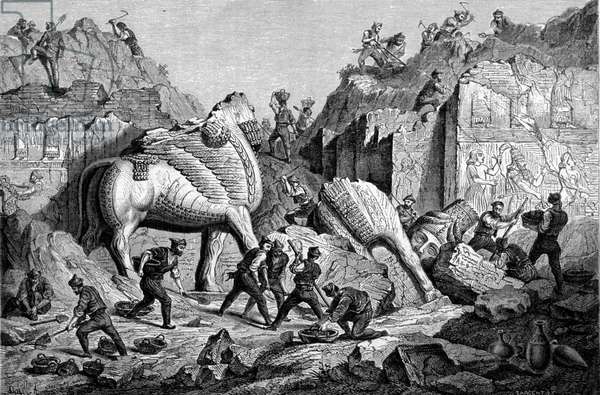Contributed to the deciphering of Akkadian cuneiform: Who is Paul Emile Botta?
Of course, he, like all Western archaeologists, accepted the theft as legitimate. He sent the archaeological values he found to Paris.

(1802-1870) French archaeologist. He made excavations in the city of Horsabad. He was born in Turin. He died in Archeres, near Poissy (Scine-et-Oise) in France. He studied medicine. In 1830, he worked as a doctor in Egypt under Mehmed Ali Pasha. He served as the French consulate in Alexandria. He explored the interior of Egypt and Arabia. Later, while he was the Mosul consul, he excavated in Horsabad, north of the city, and uncovered some building remains. He thought this was the famous Assyrian city of Ninuva. He actually found another Assyrian city called Dur-Sharrukin and the palace of Assyrian King Sargon II. Koyuncuk mound, the original location of the ancient Ninuva, was only 16 km from here. The boat went around there too but did not dig. British archaeologist Layard would soon find the Ninuva.
Paul-Émile Botta (6 December 1802 – 29 March 1870) was an Italian-born French scientist who served as Consul in Mosul (then in the Ottoman Empire, now in Iraq) from 1842, and who discovered the ruins of the ancient Assyrian capital of Dur-Sharrukin.
Botta helped decipher Akkadian cuneiform with his discoveries and suggestions. He sent the Assyrian works he discovered during his excavations to Paris. The Eastern Civilizations Department of the Louvre Museum was established for the first time with these works.
